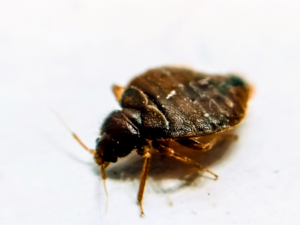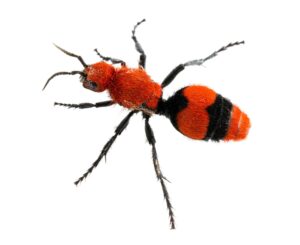Home / Blog / Spiders / How Dangerous Are Brown Recluse Spiders?
How Dangerous Are Brown Recluse Spiders?

Scientifically reviewed by Daniel Baldwin, BCE, CCFS, CP-FS
-Published on July 21, 2022
-Updated on March 10, 2025
Brown recluse spiders have an imposing presence. Usually around ¼ – ½ “ in size, they can also grow as large as the size of a quarter (including their leg span), and their reputation precedes them. They’re typically considered to be one of the most dangerous spiders and not a species you want to mess around with. Learn more about how to spot a brown recluse spider, what to do if you see one, and why these spiders are concerning even to the most enthusiastic of insect lovers.
What Are Brown Recluse Spiders?
Brown recluse spiders are also called fiddleback or violin spiders due to their distinctly segmented body and a dark brown marking on their cephalothorax or “head” in the shape of a fiddle or violin. They can be found in dark places, including those inhabited by humans. They like to hitch a ride on objects that enter your home or slip in via open cracks and crevices in your walls or foundation.
These spiders are tan to gray in color, have six eyes (instead of eight like other spiders), and eight long legs that afford them a great level of dexterity and strength, as well as the ability to climb on a variety of surfaces. Like other spiders, they eat other small insects—dead or alive.

Where Do Brown Recluse Spiders Live?
Typically, brown recluses are generally found in South Central states. Their habitat ranges from the south, extending up to Kansas, Missouri, lower parts of Illinois and Indiana, and as far east as Kentucky. In the context of your home, they like to hide in places that don’t get disturbed—think piles of yard sale leftovers, storage areas, or garbage bins that rarely get emptied. Given that they can live as long as 2–4 years in an uninterrupted environment with a food supply, it’s best to address a recluse infestation as soon as you find one.Are Brown Recluse Spiders Dangerous?
Yes, they are dangerous due to their venom, which can be harmful to humans. While they’re not aggressive and won’t go out of their way to attack a human unprovoked, they will bite if scared or threatened. Bites from a brown recluse can produce necrotic gashes. It should be noted that not all brown recluse bites result in ulcer formation and that bites of other arthropods may cause similar reactions in people.
What To Do if You Think You’ve Been Bitten by a Brown Recluse
If any symptoms like nausea and dizziness occur, call a poison control center, a physician, or go straight to an emergency room.
How To Get Rid of Brown Recluse Spiders
Try these tips to discourage brown recluse spiders from setting up in your home or garage:
- Clear away any junk-filled corners in your home or garage
- Vacuum up their webs (this will prevent them from catching food)
- Plant glue traps around your home to catch spiders in their tracks (do not place anywhere children or pets can access them)
If you try these suggestions and you still see brown recluses in your home, it may be time to call a pest control professional who specializes in spider control. They’re trained to handle the most harmful of visitors and effectively target nests so the infestation is out of your home.
Related Articles
Visit our blog to learn more.
→





